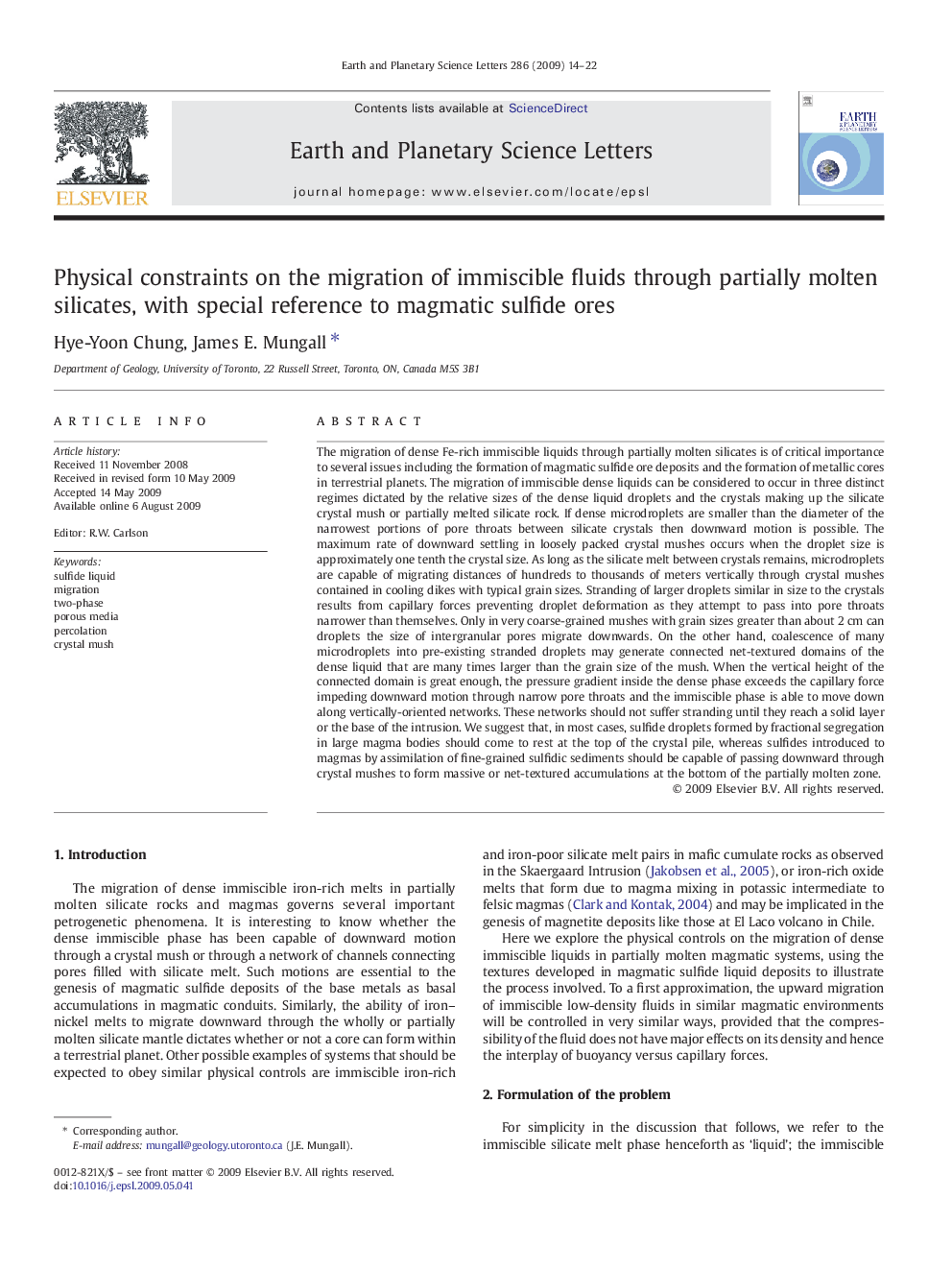| کد مقاله | کد نشریه | سال انتشار | مقاله انگلیسی | نسخه تمام متن |
|---|---|---|---|---|
| 4678863 | 1634867 | 2009 | 9 صفحه PDF | دانلود رایگان |

The migration of dense Fe-rich immiscible liquids through partially molten silicates is of critical importance to several issues including the formation of magmatic sulfide ore deposits and the formation of metallic cores in terrestrial planets. The migration of immiscible dense liquids can be considered to occur in three distinct regimes dictated by the relative sizes of the dense liquid droplets and the crystals making up the silicate crystal mush or partially melted silicate rock. If dense microdroplets are smaller than the diameter of the narrowest portions of pore throats between silicate crystals then downward motion is possible. The maximum rate of downward settling in loosely packed crystal mushes occurs when the droplet size is approximately one tenth the crystal size. As long as the silicate melt between crystals remains, microdroplets are capable of migrating distances of hundreds to thousands of meters vertically through crystal mushes contained in cooling dikes with typical grain sizes. Stranding of larger droplets similar in size to the crystals results from capillary forces preventing droplet deformation as they attempt to pass into pore throats narrower than themselves. Only in very coarse-grained mushes with grain sizes greater than about 2 cm can droplets the size of intergranular pores migrate downwards. On the other hand, coalescence of many microdroplets into pre-existing stranded droplets may generate connected net-textured domains of the dense liquid that are many times larger than the grain size of the mush. When the vertical height of the connected domain is great enough, the pressure gradient inside the dense phase exceeds the capillary force impeding downward motion through narrow pore throats and the immiscible phase is able to move down along vertically-oriented networks. These networks should not suffer stranding until they reach a solid layer or the base of the intrusion. We suggest that, in most cases, sulfide droplets formed by fractional segregation in large magma bodies should come to rest at the top of the crystal pile, whereas sulfides introduced to magmas by assimilation of fine-grained sulfidic sediments should be capable of passing downward through crystal mushes to form massive or net-textured accumulations at the bottom of the partially molten zone.
Journal: Earth and Planetary Science Letters - Volume 286, Issues 1–2, 30 August 2009, Pages 14–22